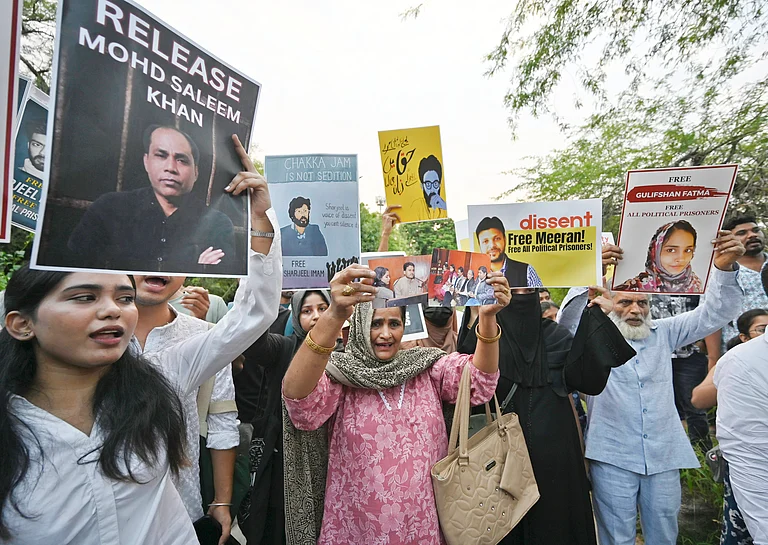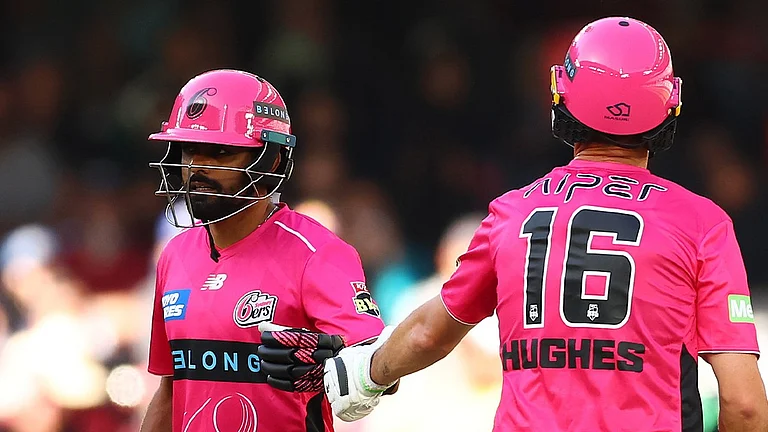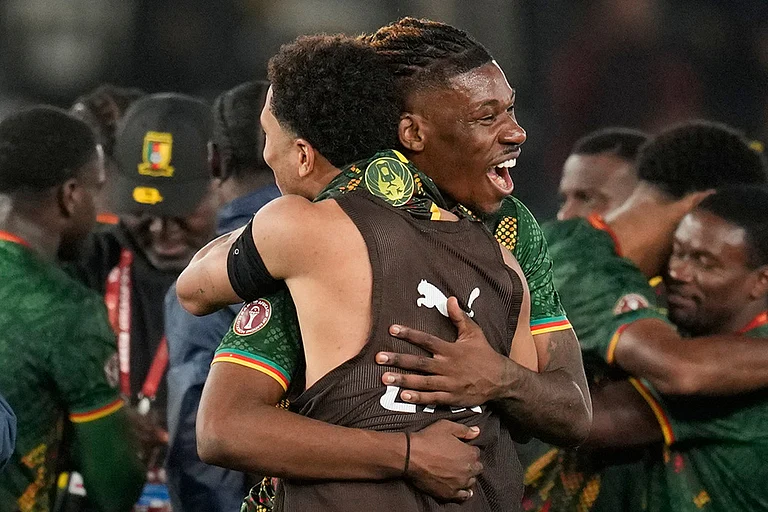As humans, we experience love in different ways. Some are sexual, some are not, some are romantic and some are not. Some couples like to define their relationships, some keep it open. Some people are attracted to the conventionally-known genders, and to the opposite ones, whereas others are more fluid and believe there’s more to the spectrum than what meets the eye. Living in the 21st century, our minds have been broadened to the LGBTQIA+ community, but many of us still live in doubt regarding what a lot of the technicalities used by people on the spectrum mean. Here’s a glossary of commonly used terms, popularising more and more as ‘Gen Z’ terms.
1. Allosexual
Allosexual people, also referred to as Zedsexual, are theoretically individuals who are on the opposite spectrum of asexual. Allosexual individuals experience sexual attraction to others and they may or may not be romantically inclined to others. They do not consider themselves to be on the Aro or Ace spectrum.
2. Ace, Aro And Abro Spectrum
‘Ace’ and ‘Aro’, short for the ‘Asexual’ and ‘Aromantic’ spectrum, are umbrella terms that describe a wide group of people who lack or only occasionally experience romantic and/or sexual attraction towards others. Individuals who identify themselves under these umbrella terms may describe themselves using varied terminology.
On the other hand, ‘Abro’, short for ‘Abrosexual’, is an umbrella term that defines someone who fluctuates between experiencing sexual and/or romantic attraction and not experiencing it. They go through phases of asexuality and periods of experiencing romantic and/or sexual attraction to others.
3. Aromantic
In contrast to a person having a romantic orientation, an aromantic person has little to no romantic attraction towards others and may or may not experience any sexual attraction towards others either. The term is colloquially known as ‘Aro’.
4. Asexual
Opposite to Allosexuals, an Asexual person (Ace) experiences little to no sexual attraction towards others. However, they do experience romantic attraction and may have one or more than one partner (panromantic asexual) at the same time, limited to no particular gender across the spectrum. It is important to note that asexuality is an umbrella term and may include various other intersectional sexual orientations such as romantic asexual, aromantic asexual, hetero-romantic asexual, homo-romantic asexual, bi-romantic asexual and others.
5. Bisexual
Bisexuality is a rather complex sexual or romantic attraction where an individual is attracted towards both men and women and also may be expanded to other genders. It is among the three main classifications of sexual orientation, the others being heterosexuality and homosexuality. Bisexual individuals may not be equally attracted to both chosen sexes, but they also do not have an exclusive sexual preference for one particular sex.
6. Breadcrumbing
The word is pretty self-explanatory―leaving crumbs of bread without giving the whole piece. It is a tactic to lure a potential romantic without spending or dispensing much effort. When a person sends out mixed signals including flirtatious texts without a defined set of feelings, it can be defined as breadcrumbing.
7. Bicurious
People identifying themselves as Bicurious are often questioning bisexuality―they are curious about their romantic or sexual attraction, but not yet sure of their sexual orientation. So they are exploring or want to explore bisexuality with people of the same or different genders.
8. Benching
When you’re not interested in a person and don’t want any commitment yet do not want to let go, that is when you’re on the fence and benching. Benching comes with murkiness when you want to call that person according to you want of desire and attention. For the rest of the time, you are happy not having any means of association.
9. Cuffle/Cuddle Date
A limbo between something serious and casual, cuffle or cuddle date is when a date is arranged with the intent of only cuddling. There may or may not be any intent of sexual activity although it may lead to something more between the two partners. Also, a fun fact: cuffling comes with seasons―winter and fall, when you would actually want to cuddle with someone, to keep it all warm and cosy!
10. Demisexual
Demisexual individuals can be straight, gay, bisexual or any other sexual orientation, but they are attracted to others sexually only after they have formed a strong emotional bond with them. In other words, a demisexual person does not experience the primary level of attraction―which is usually felt by characteristics such as smell, touch, physical appearance, etc―but only a secondary level of attraction experienced after developing strong feelings of love, joy, anger, sorrow, etc, for the other person which creates an emotional connection between them.
11. DTR
When you’re in an undefined relationship, there will come a time when you want to call for defining the feelings and situation you’re in with your potential partner. And then you call for a DTR―‘Defining The Relationship’.
12. Fleabagging
Derived from the eponymous show Fleabag, the term defines the situation of Phoebe-waller Bridge. It defines the character of Phoebe. Phoebe struggles with her relationships with humans and repeatedly dates men who are perhaps “wrong” for her. Hence, if you’re a fleabagger, you are dating the wrong person over and over again.
13. Greysexual
When persons identify themselves as greysexual―also known as grey A or grey Ace―it means that they only experience limited sexual attraction or rarely experience it. Literally referring to the ‘grey area’ between asexuality and allosexuality, it challenges the societally-enforced black and white binaries. It is different for different people identifying with greysexuality and in some cases, the person may experience sexual attraction only in certain special circumstances.
14. Greyromantic
Greyromantic is a term used to describe people who experience limited or rare romantic attraction towards others. Greyromantic people usually feel a strong emotional bond with others, but they lack the desire for a romantic relationship, or they experience it infrequently. On the other hand, they may or may not experience sexual attraction. Greyromantic, like greysexual, falls in the ‘grey area’ between the Allo and the Ace spectrum.
15. Ghosting
Have you ever had the urge to abruptly end communication with someone? Ghosting is the act of sudden disappearance from any kind of relationship or friendship without stating a reason as to why. In the fast-paced age of dating, ghosting is often seen as a way of making a quick move from one person to the next.
16. Green Dating
With the growing awareness around the environment and the youth making eco-friendly choices, green dating assumes some serious significance in the Gen Z dating arena. If you choose to save some discussion around environmental and climate concerns for the dinner date, then you’re choosing green dating. The term refers to climate-friendly matches coming together to preach ‘environmentalism’.
17. Monogamy
Monogamy is the most commonly-known type of dyadic relationship where a person has only one sexual or romantic partner for the rest of their lives, or at least during the length of their relationship. It is also defined by the most recognisable legal act of marriage where a person chooses to live with only one partner till the end.
18. Open Relationship
As opposed to a ‘close relationship’, in an open relationship, any person can be romantically and sexually involved with more than one person. The belief in open relationships is having multiple partnerships where agreement is the key. It’s an arrangement that both parties agree is non-exclusive or non-monogamous.
19. Polyamory
Polyamory is a form of consensual non-monogamous relationship in which an individual has the freedom to have multiple romantic partners simultaneously. It is now also seen as an umbrella term for various non-monogamous, multi-partner relationships, or non-exclusive sexual or romantic relationships, including open marriages. Couples in a polyamorous relationship work on building their values, intimacy, honesty, integrity and keeping jealousy at bay to maintain a long-term relationship.
20. Polygamy
Polygamy is the practice of being married to more than one partner at the same time. While it also signifies consensual non-monogamy, it is different from polyamory, in which a person has more than one romantic partner with the consensus of each of them. Polygamy is further characterised into two categories―polygyny and polyandry. Polygyny refers to a man having more than one female spouse (wives). It is legal on religious grounds for Muslims in nations such as India, Pakistan, Singapore, and Malaysia, and several countries in Africa. Polyandry, on the other hand, refers to a woman having more than one male spouse. It is illegal in all countries.
21. Panromantic Ace
A combination of two words, Panromantic Ace is the sexual orientation of a person who is attracted to all genders, sexual and romantic orientations across the spectrum. ‘Panromantic’ is the idea of being romantically attracted to another person, while ‘Ace’ signifies that the individual lacks or only occasionally feels the desire of a sexual experience.
22. PanAroAce
A Pansexual Aromantic and Asexual person, PanAroAce, is one whose attraction is not restricted one gender or sexual or romantic orientation, but is rather fluid. They are attracted to human beings beyond a romantic or sexual label.
23. Platonic Love
Named after the great Greek philosopher Plato, platonic love or relationship is one where there is neither sexual involvement between two people nor it is suppressed or sublimated. People in platonic relationships are on the ace and/or aro spectrum and are attracted to each other in other non-romantic and non-sexual ways.
24. Pansexual
Pansexual people are sexually, romantically and/or emotionally attracted to people of all genders and sexes, regardless of their sexual or romantic orientation. They often consider themselves as gender-blind because they are attracted to all people across and beyond the spectrum.
25. Pink Flag
Heard of red flags, that put you on high alert to absolutely avoid the person in concern? Pink flags are close to the reds yet not absolutely, hence, the shade is a little lighter. Pink flag is extremely subjective and comes close on the heels to red. These are the small, hidden differences that, if ignored or avoided to be worked out, might set your alarm off creating issues in the relationship at a later stage.
26. Queerbaiting
In individual and relationship contexts, it is referred to as the performativity of “queer aesthetics” while engaging with homophobia and benefitting from the hegemonic heterosexual privileges. It has also been used to describe the assumption/attempt to infuse same-sex friendships, solidarity, and cishet fantasies into queer relationships to evade the exhaustion, trauma, gender roles, and kink-shaming comparatively more persistent in heterosexual relationships.
27. Queerplatonic Love
Queerplatonic love refers to a kind of relationship that bends the lines between a conventional and romantic relationship. A Queerplatonic relationship (QPR) transcends the idea of typical dating and allows the two people involved to love in more ways than friendship, that is, in explicit intimate commitments that are yet not romantic in nature.
28. Situationship
The term arises from a situation which is somewhere between a committed relationship and something that is more than a friendship. It would be true to say that in a situationship, people begin dating but the ‘situation’ is a bit murky without any clear definition of commitment.
29. Textationship
Bored of meeting a person but at the same time cannot give up talking? Textationship defines such a situation where a person is available to talk over text but never available to meet physically.
30. Wokefishing
On the spectrum of lying to bait a person, wokefishing perhaps comes somewhat on the top. It refers to a situation when a person lies about his intellect to pretend to match the political beliefs of a person. They project to be a person who they are not, trying to be ‘woke’.
31. Zombeing
An extension of ghosting, zombeing is when a person disappears (or ghosts) and then suddenly makes a comeback without any explanation. When an old flame arises from the dead, it’s called zombeing. The person wants to come back to her life acting as if nothing ever happened.


























